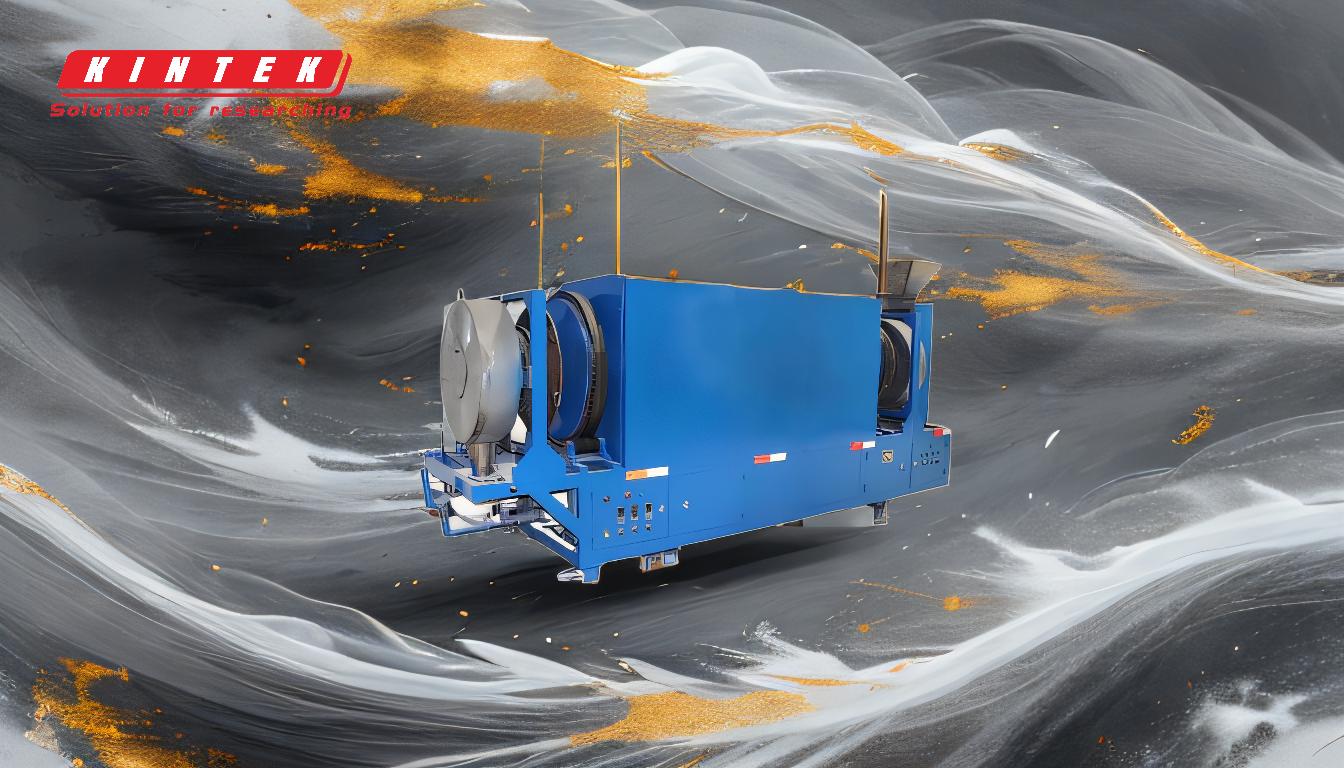The end products of tyre pyrolysis are primarily pyrolysis oil (also referred to as fuel oil), carbon black, steel wire, and uncondensable gas (syngas). These products are generated through the thermal decomposition of tires in the absence of oxygen. Pyrolysis oil can be used as fuel or refined for higher-value applications. Carbon black is a valuable material used in rubber products, inks, and construction materials. Steel wire is recycled for use in metal abrasives and other steel-based products. Uncondensable gas, or syngas, contains combustible gases like hydrogen, methane, and carbon monoxide, which can be used as an energy source. The composition and yield of these products depend on factors such as pyrolysis temperature, method, and tire composition.
Key Points Explained:
-
Pyrolysis Oil (Fuel Oil):
- Description: Pyrolysis oil is a liquid product obtained from the condensation of vapors released during the pyrolysis process. It is often referred to as fuel oil due to its combustible properties.
-
Applications:
- Can be used directly as a fuel in industrial boilers, furnaces, or engines.
- Can be further distilled or refined to produce higher-value products such as diesel or gasoline.
- Value Addition: The oil's composition and quality depend on the pyrolysis conditions, such as temperature and feedstock type, but it generally contains hydrocarbons that make it suitable for energy generation.
-
Carbon Black:
- Description: Carbon black is a fine powder composed of carbon particles, produced as a solid residue during pyrolysis.
-
Applications:
- Widely used as a reinforcing agent in rubber products, including tires and industrial rubber goods.
- Used in the production of inks, coatings, and pigments.
- Acts as a modifier in asphalt and construction materials to enhance durability and performance.
- Economic Value: Carbon black is a high-demand material in various industries, making it a valuable byproduct of tyre pyrolysis.
-
Steel Wire:
- Description: Steel wire is extracted from tires during the pretreatment process before pyrolysis. It is a metallic residue that remains after the rubber has been thermally decomposed.
-
Applications:
- Recycled and used in the manufacture of metal abrasives, steel reinforcements, and other basic steel materials.
- Can be sold to steel mills for reprocessing into new steel products.
- Environmental Benefit: Recycling steel wire reduces the need for virgin steel production, contributing to resource conservation and reduced environmental impact.
-
Uncondensable Gas (Syngas):
- Description: Uncondensable gas, also known as syngas, is a mixture of combustible gases (e.g., hydrogen, methane, carbon monoxide) and non-combustible gases produced during pyrolysis.
-
Applications:
- Used as a fuel source to power the pyrolysis process itself, reducing external energy requirements.
- Can be utilized in gas engines or turbines for electricity generation.
- Composition Variability: The exact composition of syngas depends on pyrolysis conditions, but it generally contains energy-rich gases that make it a valuable byproduct.
-
Factors Influencing Product Composition:
- Pyrolysis Temperature: Higher temperatures tend to increase the yield of gas and decrease the yield of oil and char.
- Pyrolysis Method: Different pyrolysis technologies (e.g., fast pyrolysis, slow pyrolysis) can influence the distribution and quality of end products.
- Feedstock Composition: The type and composition of the tires used (e.g., passenger tires vs. truck tires) can affect the proportions and properties of the end products.
-
Environmental and Economic Benefits:
- Waste Reduction: Tyre pyrolysis provides a sustainable solution for managing end-of-life tires, reducing landfill waste and environmental pollution.
- Resource Recovery: The process recovers valuable materials (oil, carbon black, steel) that can be reused in various industries, promoting a circular economy.
- Energy Generation: The production of pyrolysis oil and syngas contributes to energy recovery from waste, reducing reliance on fossil fuels.
By understanding these key points, stakeholders in the tyre pyrolysis industry can optimize their processes to maximize the yield and value of end products while minimizing environmental impact.
Summary Table:
| Product | Description | Applications |
|---|---|---|
| Pyrolysis Oil | Liquid fuel from condensed pyrolysis vapors | Industrial fuel, refined into diesel/gasoline |
| Carbon Black | Fine carbon powder residue | Rubber reinforcement, inks, coatings, construction materials |
| Steel Wire | Recycled metallic residue from tires | Metal abrasives, steel reinforcements, sold to steel mills |
| Syngas | Combustible gas mixture (hydrogen, methane, CO) | Fuel for pyrolysis process, electricity generation |
Ready to explore tyre pyrolysis solutions? Contact us today to learn more and optimize your process!








